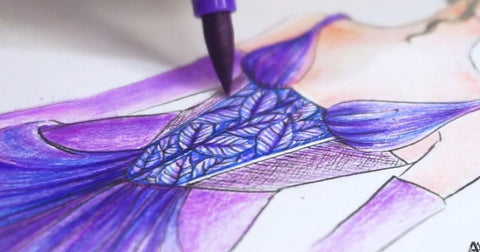Into the Creative Mind of Jean-Auguste-Dominique Ingres: His Art, Style, and Story
Last Updated: August 11, 2025
Do not concern yourself with other people. Concern yourself with your own work alone. — Jean-Auguste-Dominique Ingres
In the pantheon of art history, few names resonate with the same level of reverence and admiration as Jean-Auguste-Dominique Ingres.
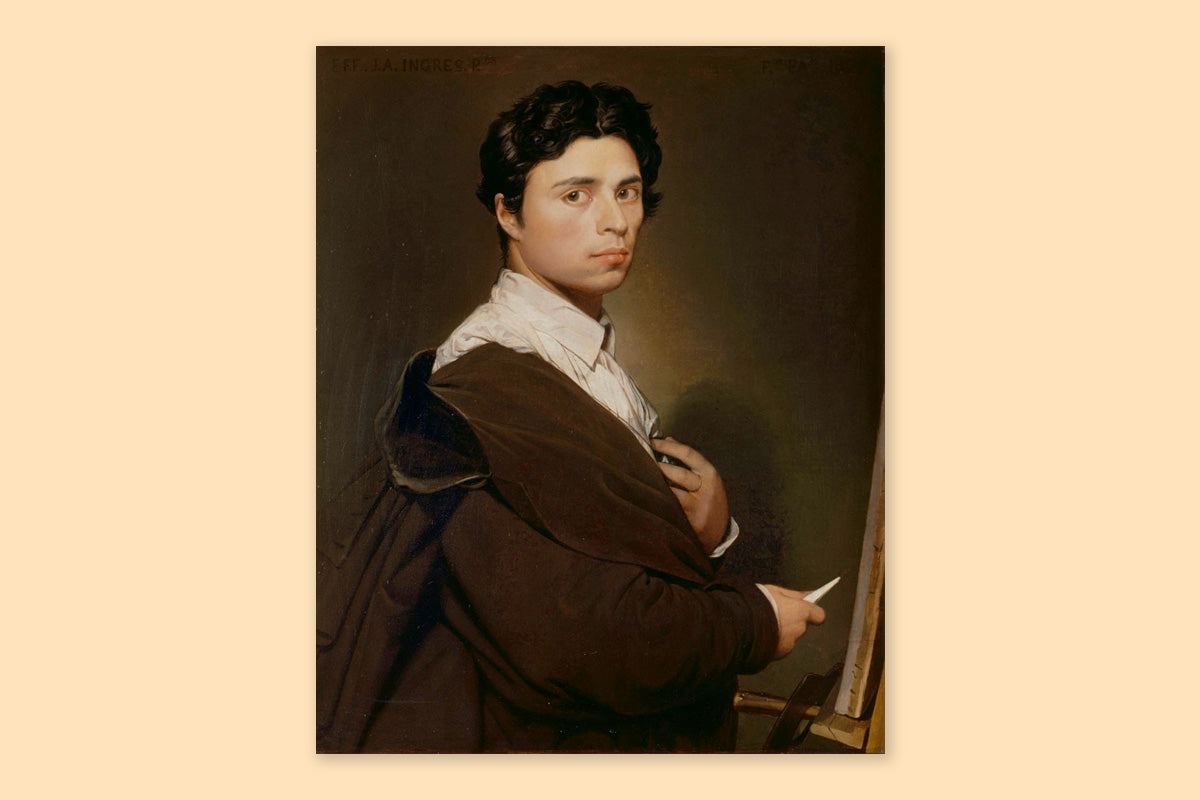
Jean-Auguste-Dominique Ingres’ Self-portrait at age 24 (1804)
Renowned for his impeccable draftsmanship, masterful use of line, and classical compositions, Ingres stands as a titan of the neoclassical and academic art movements. His works continue to captivate audiences worldwide, offering glimpses into the profound depths of his creative mind.
A Talented Start
Born in Montauban, France, in 1780, Ingres exhibited artistic talent from an early age. Jean-Auguste-Dominique Ingres received initial training from his father, who was an artist working for the town. The young boy displayed an advanced skill in both music and art.
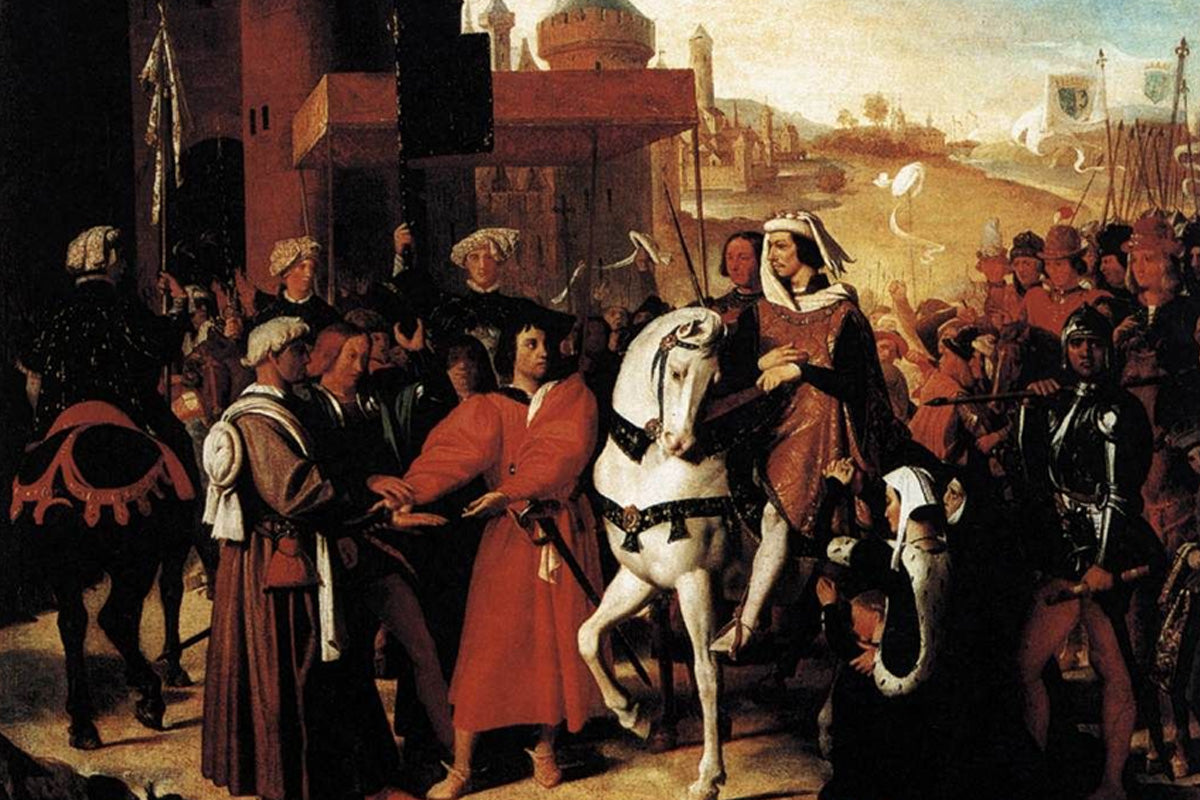
The Entry of the Future Charles V into Paris in 1358 (1821)
He honed his skills under the tutelage of Jacques-Louis David, the preeminent neoclassical painter of the time, whose influence would profoundly shape Ingres' artistic vision. Despite initial struggles and criticisms, Ingres remained steadfast in his pursuit of excellence, eventually gaining recognition and acclaim for his distinctive style.
Of Elegant Lines and Classical Antiquity
At the heart of Ingres' art lies a deep reverence for classical antiquity. He drew inspiration from the works of ancient Greek and Roman artists, incorporating their ideals of beauty, harmony, and proportion into his own creations.
This classical influence is evident in the graceful contours of his figures, the meticulous attention to detail, and the sense of idealized perfection that permeates his compositions.

Ingres' mastery of line is perhaps his most defining characteristic as an artist. His drawings and paintings are characterized by precise, elegant lines that delineate form with remarkable clarity and precision.
Whether depicting the delicate curves of a figure or the intricate details of drapery, Ingres' lines possess a mesmerizing quality, drawing the viewer into a world of sublime beauty and refinement.
The Hallmarks of a Master
One of the hallmarks of Ingres' style is his ability to infuse his works with a sense of timeless elegance and grace.

Napoleon I on His Imperial Throne (1806)
His portraits, in particular, are renowned for their ability to capture the essence of his subjects while elevating them to a state of eternal dignity and poise. From the regal bearing of Napoleon Bonaparte to the serene beauty of Madame Moitessier, Ingres' portraits are imbued with a sense of aristocratic splendor that transcends mere likeness.
Ingres' artistic legacy extends beyond his technical virtuosity to encompass a rich tapestry of themes and subjects. His oeuvre encompasses a wide range of genres, from history painting and portraiture to mythological and religious themes.
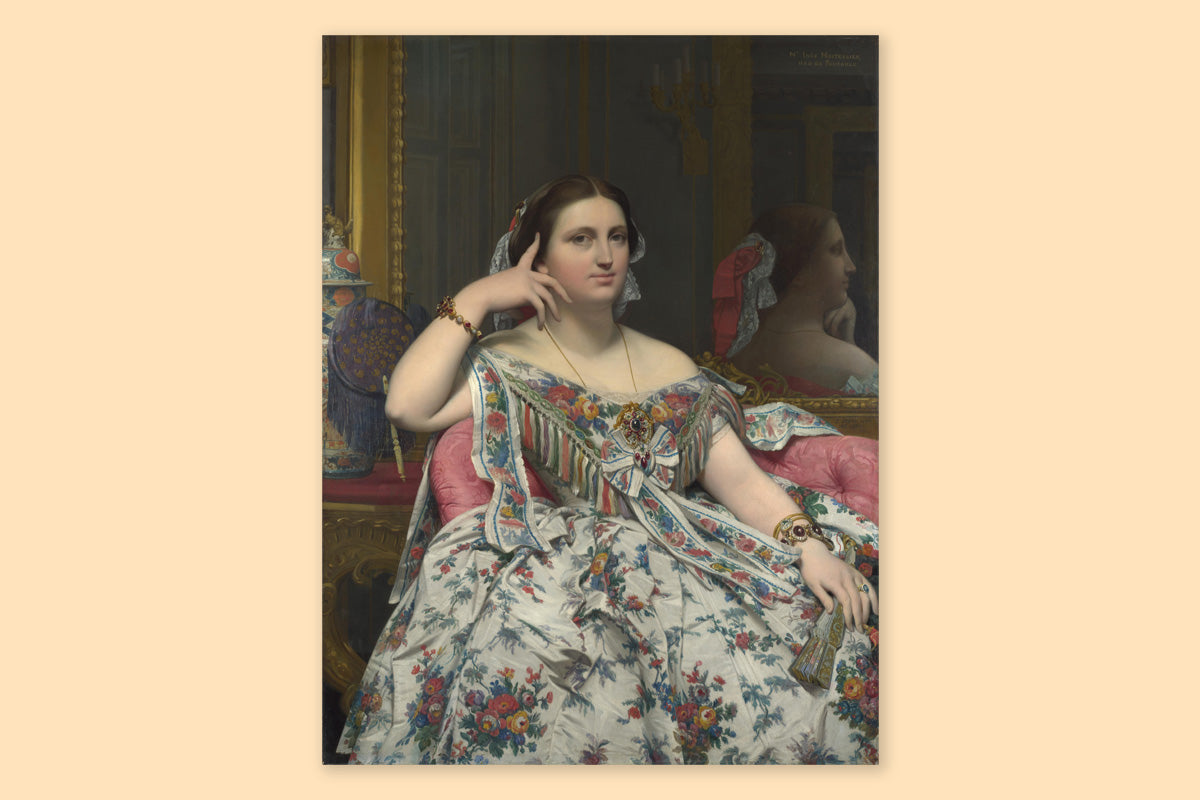
Yet, regardless of the subject matter, Ingres approached each work with the same meticulous attention to detail and unwavering commitment to excellence.
Ingres’ Most Famous Artworks and Masterpieces
Jean-Auguste-Dominique Ingres created numerous iconic artworks throughout his illustrious career, many of which are celebrated as masterpieces of neoclassical and academic art. Here are some of his most famous works:
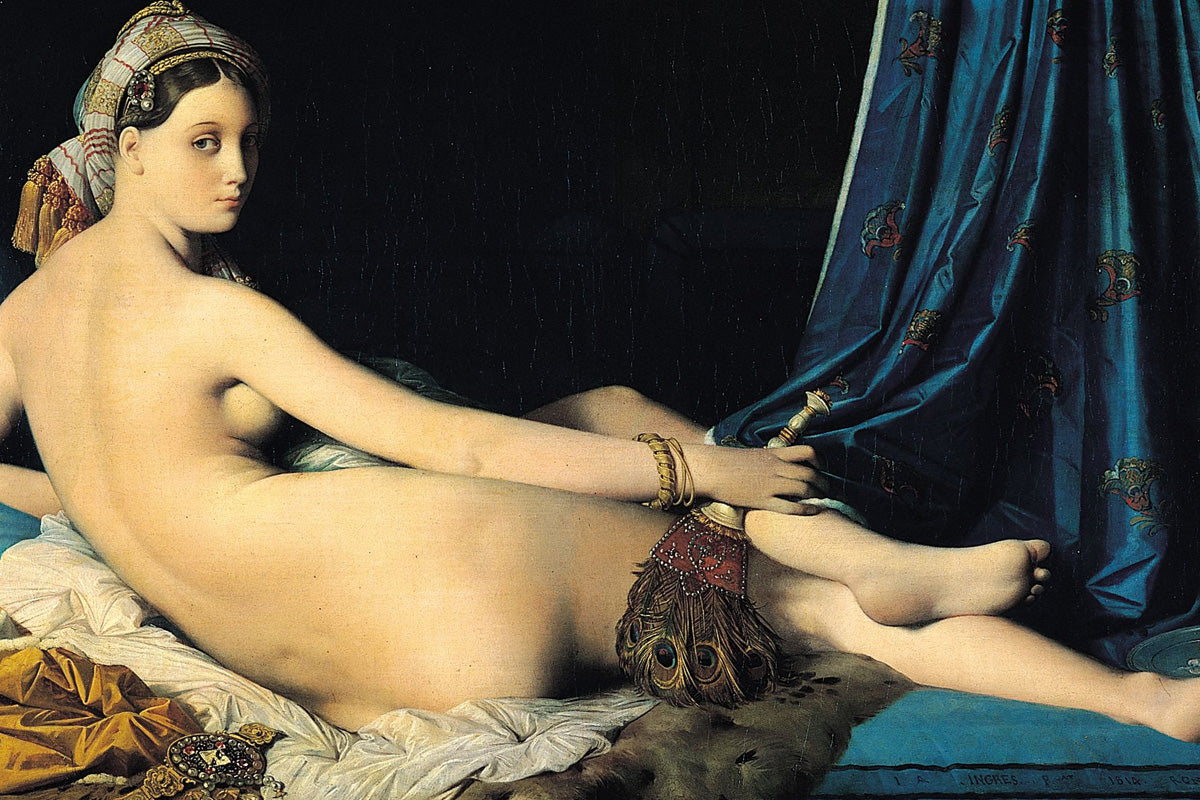
1. "La Grande Odalisque" (1814)
This painting, depicting a reclining nude woman in an oriental setting, is one of Ingres's most renowned works. It exemplifies his mastery of line and his ability to infuse his subjects with a sense of idealized beauty.
2. "The Valpinçon Bather" (1808)
Another example of Ingres's fascination with the female form, this painting features a woman bathing in a classical setting. It showcases his meticulous attention to detail and his skillful rendering of the human figure.
3. "The Turkish Bath" (1862)
Completed later in his career, this painting is a testament to Ingres's enduring fascination with exoticism and orientalism. It features a group of nude women in a Turkish bath, arranged in a complex and dynamic composition.
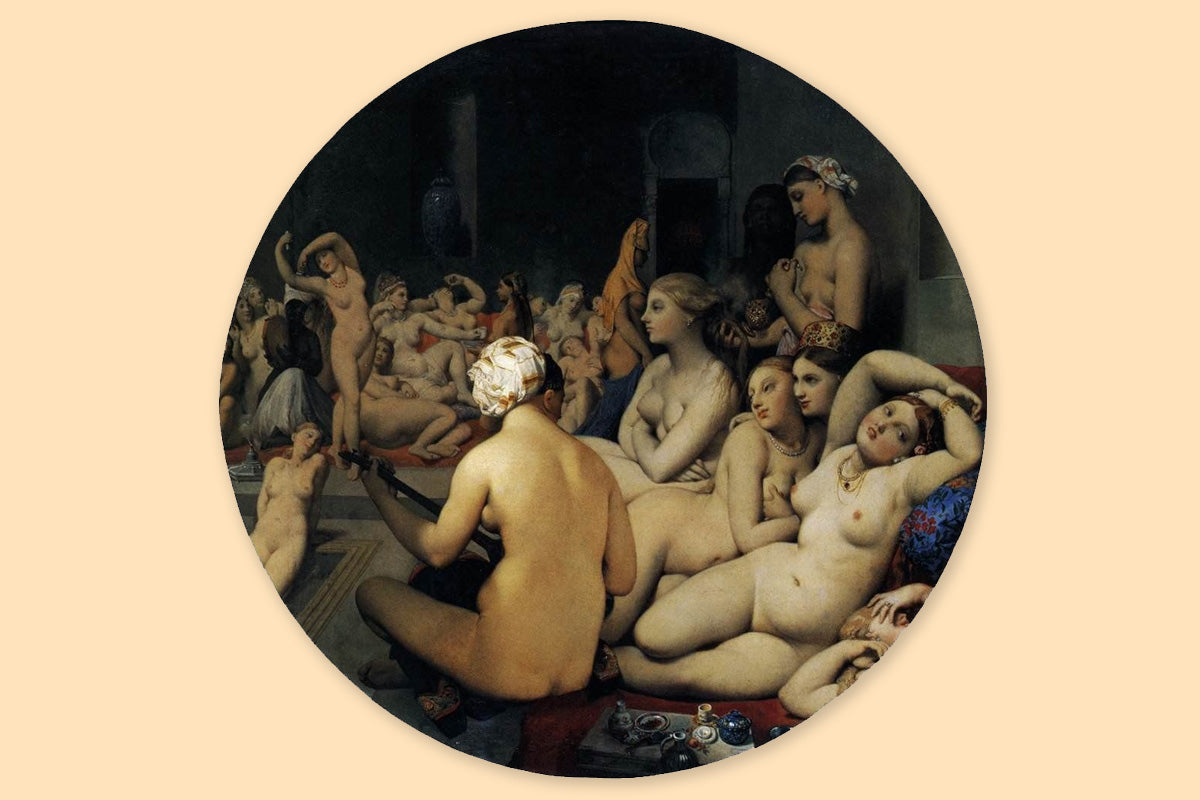
4. "Napoleon I on His Imperial Throne" (1806)
Commissioned by Napoleon himself, this portrait depicts the Emperor seated on a grand throne, clad in imperial regalia. It is a striking example of Ingres's ability to capture the majesty and power of his subjects.
5. "Madame Moitessier" (1856)
In this portrait, Ingres portrays Madame Moitessier, a prominent society figure, with a sense of elegance and refinement. The painting is celebrated for its exquisite detail and subtle psychological insight.
6. "The Apotheosis of Homer" (1827)
This monumental canvas, commissioned for the ceiling of the Louvre, depicts the legendary poet Homer surrounded by various figures from Greek mythology. It showcases Ingres's ability to handle large-scale compositions with grace and skill.
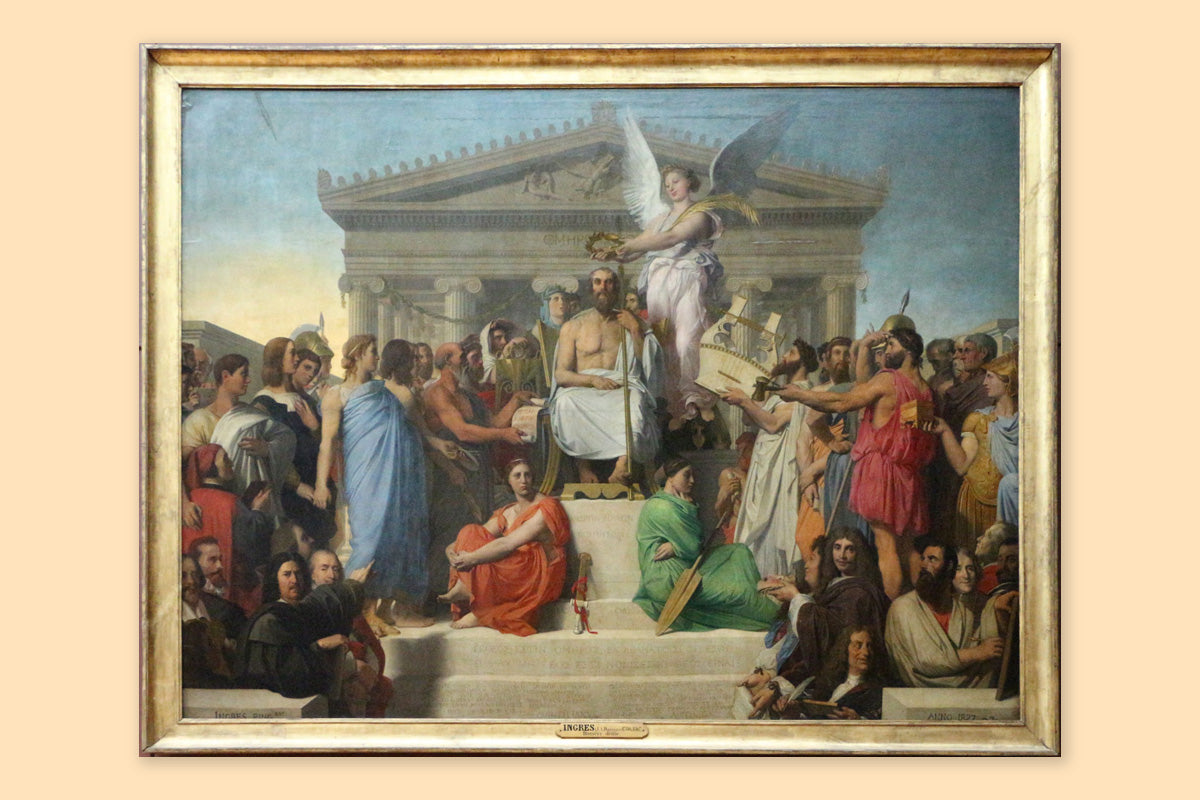
The Apotheosis of Homer (1827)
7. "The Death of Leonardo da Vinci" (1818)
In this poignant painting, Ingres pays homage to the Renaissance master Leonardo da Vinci, depicting his deathbed scene with a sense of solemn reverence.
Standing Firm Against Controversy
Despite his unparalleled skill and artistic vision, Ingres faced criticism and controversy throughout his career.
His adherence to classical principles often put him at odds with the burgeoning romantic movement, which favored emotion and spontaneity over formal discipline. Despite that, Ingres remained steadfast in his convictions, forging a path that would cement his legacy as one of the greatest artists of his time.
The Enduring Legacy

The Death of Leonardo da Vinci (1818)
Today, the works of Jean-Auguste-Dominique Ingres continue to inspire and captivate audiences around the world. From the hallowed halls of museums to the pages of art history textbooks, his legacy endures as a testament to the enduring power of classical beauty and artistic excellence.
As we delve into the creative mind of Ingres, we gain a deeper appreciation for the timeless allure of his art and the profound depths of his artistic vision. We hope this journey inspires you to continue your artistry, and if you ever need any help with getting ideas and inspiration, you’re always welcome to drop by The Creative Corner.
Have an artful day!





